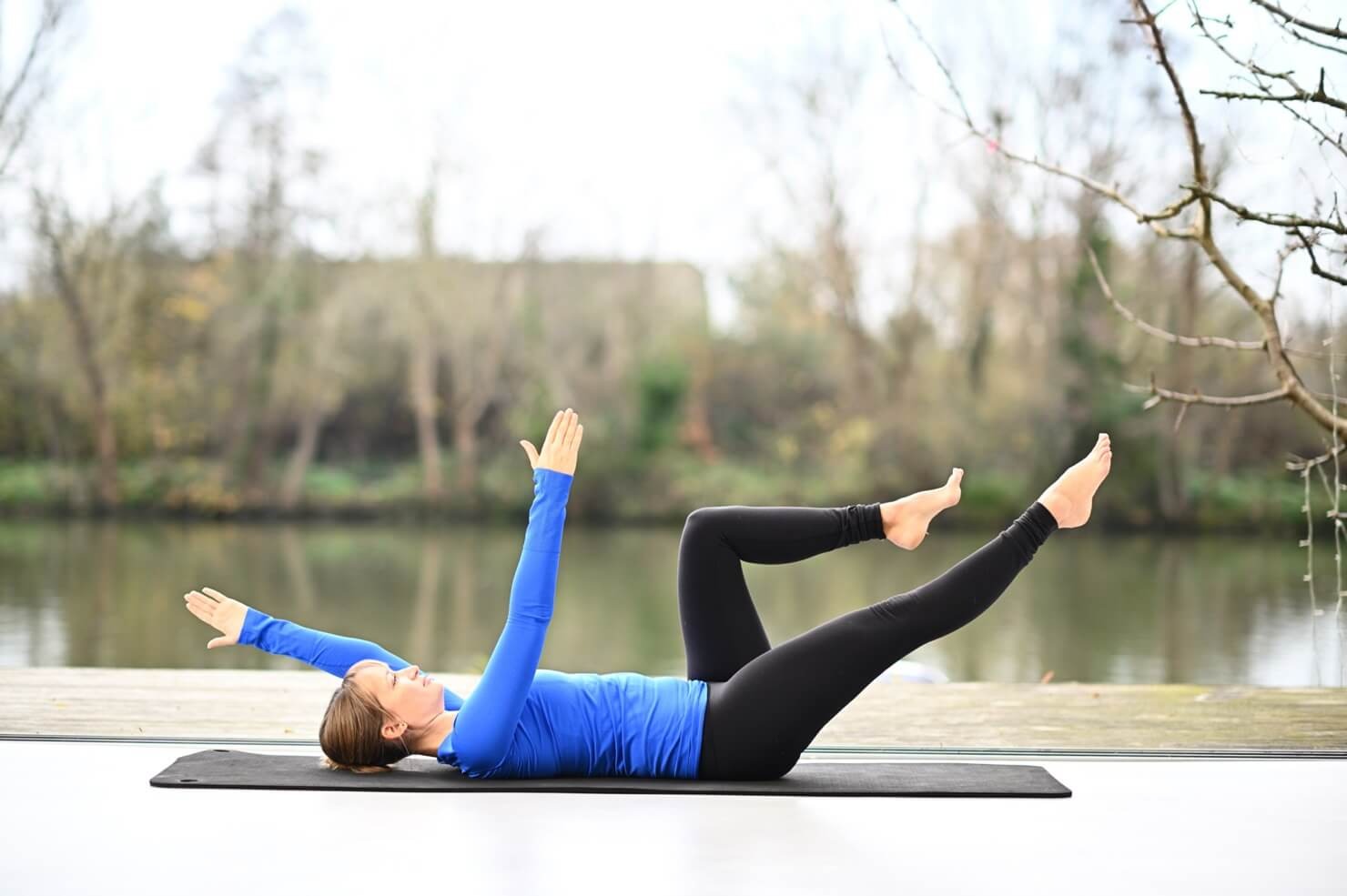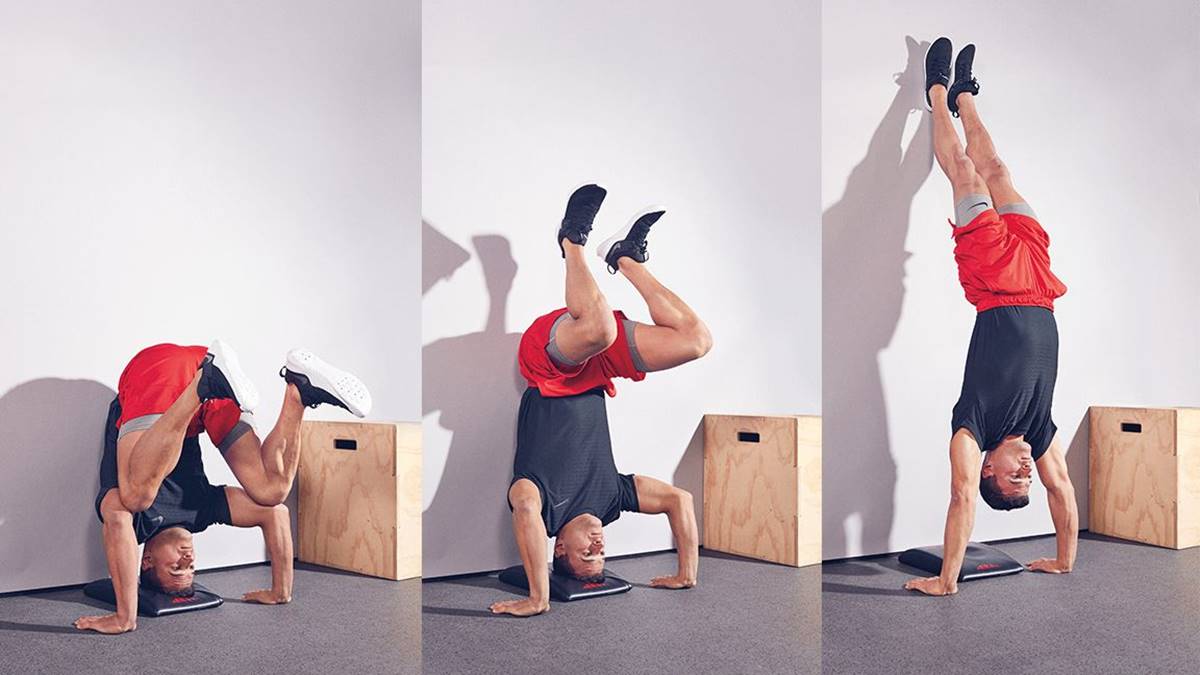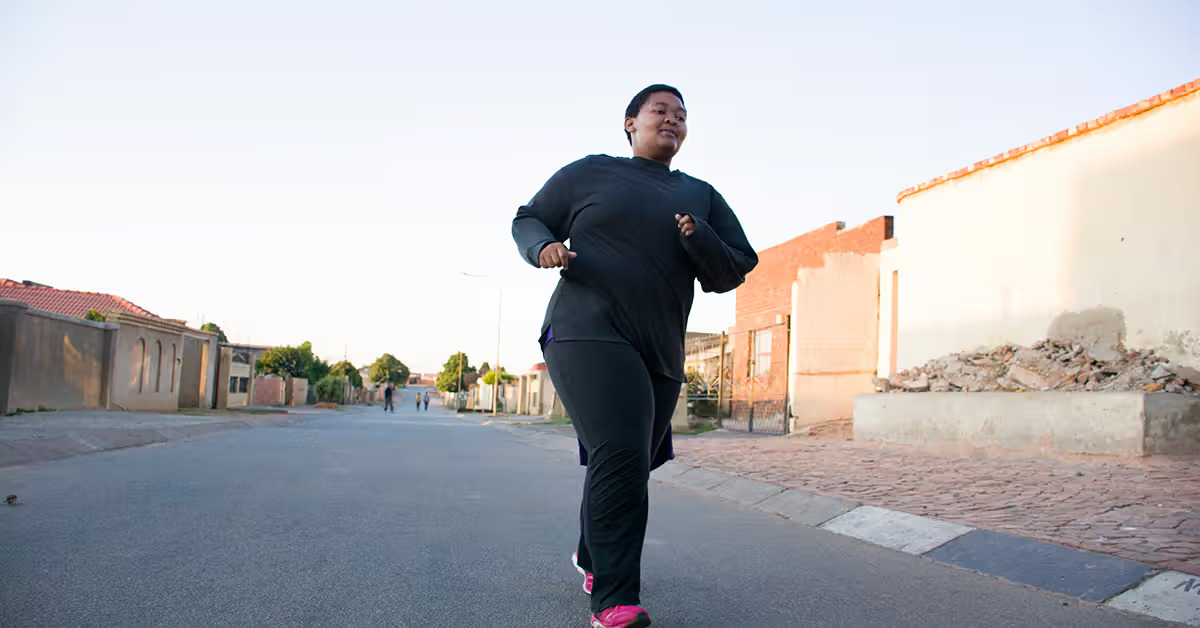

Featured
How To Avoid Common Exercise Injuries
Published: October 2, 2023
Learn how to prevent common exercise injuries with our featured guide. Stay safe while working out and achieve your fitness goals.
Introduction
Exercise is an essential component of a healthy lifestyle, providing numerous physical and mental benefits. Whether you enjoy cardiovascular activities, strength training, or flexibility exercises, incorporating regular physical activity into your routine can improve your overall well-being. However, it’s important to approach exercise with caution and take steps to prevent common injuries that can occur during workouts.
Injuries can be frustrating and debilitating, sidelining you from your fitness goals and daily activities. From sprains and strains to more serious conditions like fractures and torn ligaments, exercise-related injuries can occur to anyone, regardless of fitness level or experience. Fortunately, there are several strategies you can implement to minimize the risk of these injuries and enjoy a safe and effective exercise regimen.
In this article, we will explore various techniques and practices to help you avoid the most common exercise injuries. By following these guidelines, you can maximize your workout results while minimizing the chance of getting sidelined by an injury.
Importance of Injury Prevention in Exercise
When it comes to exercise, prevention is key. By taking proactive measures to prevent injuries, you can ensure the longevity of your fitness journey and maintain a consistent exercise routine. Here are some key reasons why injury prevention is of utmost importance in exercise:
- Continuity in Fitness Goals: Injuries can severely disrupt your fitness routine, causing setbacks and even derailing your progress. By focusing on injury prevention, you can maintain consistency in your workouts and stay on track towards reaching your fitness goals.
- Long-Term Health and Well-being: Engaging in regular exercise has numerous health benefits, such as improving cardiovascular health, strengthening muscles and bones, and boosting mental well-being. By preventing injuries, you can continue to reap these long-term health benefits and lead a healthier, more active lifestyle.
- Financial Savings: Injuries can result in significant medical expenses, including doctor’s visits, physical therapy sessions, and medication costs. By prioritizing injury prevention, you can avoid these financial burdens and allocate your resources towards other aspects of your well-being.
- Mental Resilience: Dealing with an injury can be mentally challenging, leading to frustration, disappointment, and decreased motivation. By preventing injuries, you can maintain your mental resilience and stay motivated to pursue your fitness journey, even when faced with other life challenges.
It’s important to remember that injury prevention is not just for seasoned athletes or those engaged in intense workouts. Even individuals new to exercise or participating in low-impact activities can benefit from taking precautions to avoid injuries. By understanding the common exercise-related injuries and incorporating targeted strategies, you can protect yourself during workouts and enjoy a safe and injury-free fitness journey.
Understanding Common Exercise Injuries
Before delving into injury prevention techniques, it’s important to have a basic understanding of the common exercise-related injuries that can occur. By being aware of these injuries, you can take proactive steps to prevent them. Here are some of the most frequently encountered exercise injuries:
- Strains and Sprains: These injuries involve the overstretching or tearing of muscles, tendons, or ligaments. Strains commonly occur in the muscles, while sprains affect the ligaments. Common causes include sudden movements, improper technique, or lack of warm-up.
- Tendonitis: Tendonitis refers to the inflammation of the tendons, usually as a result of overuse or repetitive motions. Activities such as running, weightlifting, or playing certain sports can contribute to the development of tendonitis.
- Shin Splints: Shin splints are characterized by pain along the inner edge of the shinbone. They commonly occur in runners and individuals who engage in high-impact activities. Poor footwear, overpronation, or sudden changes in training intensity can contribute to the development of shin splints.
- Stress Fractures: Stress fractures are tiny cracks in the bones, often caused by repetitive stress or overuse. They are commonly seen in runners, dancers, and individuals participating in high-impact sports. Insufficient rest and improper training techniques can contribute to the development of stress fractures.
- Rotator Cuff Injuries: The rotator cuff is a group of muscles and tendons that stabilize the shoulder joint. Overhead activities, such as weightlifting or throwing sports, can lead to rotator cuff injuries, including tendinitis or tears.
It is important to note that the above list is not exhaustive, and there are numerous other exercise-related injuries that can occur. Each type of injury may have different symptoms, ranging from mild discomfort to severe pain and impaired function. If you experience persistent pain, swelling, or limitation in movement, it is crucial to seek medical attention for an accurate diagnosis and appropriate treatment.
Warm-Up and Cool-Down Techniques
One of the most effective ways to prevent exercise injuries is by properly warming up before and cooling down after your workouts. Warm-up and cool-down routines are essential in preparing your body for physical activity and aiding in the recovery process. Here are some techniques to incorporate into your warm-up and cool-down routine:
Warm-Up:
- Dynamic Stretching: Perform a series of dynamic stretches that target the major muscle groups you will be using during your workout. These stretches involve moving parts of your body through a full range of motion in a controlled manner. Examples include lunges, arm swings, and leg swings.
- Cardiovascular Exercise: Start your warm-up with a few minutes of low-intensity cardiovascular exercise, such as jogging, cycling, or brisk walking. This will increase your heart rate, improve blood flow, and warm up your muscles.
- Joint Mobilization: Perform gentle joint mobilization exercises to increase range of motion and lubricate the joints. This can include wrist circles, shoulder rolls, and ankle rotations.
Cool-Down:
- Static Stretching: Focus on static stretching during your cool-down phase. Hold stretches for 15-30 seconds, targeting the major muscle groups you worked during your workout. This will help improve flexibility and promote muscle recovery.
- Gradual Reduction in Intensity: Slowly decrease the intensity of your exercise, such as walking or jogging at a slower pace, to allow your heart rate to gradually return to normal. This gentle transition from high-intensity to low-intensity activity helps prevent blood pooling and dizziness.
- Deep Breathing and Relaxation: Finish your cool-down routine with deep breathing exercises and relaxation techniques, such as meditation or gentle yoga poses. This can help promote mental relaxation and reduce post-workout muscle tension.
Remember, the warm-up and cool-down phases are just as important as the main workout itself. Take the time to properly warm up your muscles and prepare your body for the upcoming physical activity. Similarly, make sure to cool down and allow your body to gradually recover after exercising. By incorporating these techniques into your fitness routine, you can minimize the risk of injury and enhance your overall performance.
Proper Form and Technique
Using proper form and technique during exercise is crucial in preventing injuries and maximizing the effectiveness of your workouts. Here are some tips to ensure you maintain proper form:
- Start with Proper Alignment: Whether it’s lifting weights, performing bodyweight exercises, or participating in sports, begin with correct posture and alignment. This includes maintaining a neutral spine, engaging your core, and keeping your joints in proper alignment.
- Learn the Correct Technique: Before attempting any new exercise or movement, take the time to learn the proper technique. This can be achieved through professional instruction, videos, or guidance from an experienced trainer. Understanding the correct form will not only help prevent injuries but also ensure you are targeting the intended muscles effectively.
- Engage the Appropriate Muscles: Focus on engaging the muscles targeted by the exercise and avoid unnecessary compensations or relying on momentum. This will help prevent muscle imbalances and reduce the risk of strain or overuse injuries.
- Maintain Stability and Control: A controlled range of motion is essential to prevent injuries. Avoid excessive swinging or jerky movements during exercises. Instead, focus on smooth and controlled motions to maintain stability and control throughout the exercise.
- Listen to Your Body: Pay attention to any pain or discomfort during exercise. If an exercise causes sharp or persistent pain, modify or stop the movement. Pushing through pain can lead to further injury. Remember that discomfort should be distinguished from the muscle burn associated with challenging workouts.
- Use Proper Breathing Technique: Coordinate your breathing with your movements during exercise. Generally, exhale during the exertion phase (e.g., lifting) and inhale during the relaxation phase (e.g., lowering). This helps stabilize your core and prevents unnecessary strain.
- Progress Gradually: Avoid the temptation to take on too much too soon. Gradually increase the intensity, duration, or weights of your exercises over time to allow your body to adapt and minimize the risk of overuse injuries.
Remember, using proper form and technique not only reduces the risk of injuries but also helps you achieve optimal results from your workouts. If you’re unsure about the correct form for a particular exercise, seek guidance from a qualified fitness professional. They can provide valuable insights and ensure you are performing the exercise safely and effectively.
Gradual Progression and Overload
Gradual progression and overload are essential principles in exercise programming. These concepts involve systematically increasing the intensity, duration, or frequency of your workouts to challenge your body and promote continuous improvement. However, it is important to approach progression and overload cautiously to prevent injuries.
Here are some key considerations when implementing gradual progression and overload:
- Start at Your Fitness Level: Begin with exercises and routines that suit your current fitness level. It’s crucial to establish a solid foundation before progressing to more challenging exercises.
- Incrementally Increase Intensity: Gradually increase the intensity of your workouts by adding more weight, resistance, or speed. This should be done in small increments to allow your body to adapt and avoid overexertion.
- Balance Challenge and Recovery: Strive for a balance between challenging your body and providing adequate recovery time. Gradually increasing the demands on your body without proper recovery can lead to overuse injuries and burnout.
- Monitor Your Body’s Response: Pay attention to how your body responds to the increased intensity. If you experience excessive fatigue, persistent muscle soreness, or joint discomfort, it may be a sign that you need to scale back and give your body more time to adapt.
- Periodize Your Training: Implement a structured training plan that includes periods of progressive overload followed by periods of reduced intensity or active recovery. This helps prevent plateauing and optimizes performance while reducing the risk of overuse injuries.
- Include Rest Days: Rest days are crucial for allowing your body to repair and recover from the stress of exercise. Schedule regular rest days throughout your training week to give your muscles, joints, and connective tissues time to rest and rebuild.
Remember, the key to gradual progression and overload is finding the right balance between challenging your body and allowing it to recover. Pushing yourself too hard or progressing too rapidly can lead to injury and setbacks. It’s important to listen to your body, be patient with your progress, and adjust your training accordingly.
Listening to Your Body and Avoiding Overtraining
Listening to your body is a fundamental aspect of injury prevention and overall well-being. It involves being attuned to your body’s signals and responding accordingly to avoid overtraining and potential injuries. Here are some important considerations when it comes to listening to your body:
- Recognize Fatigue and Rest: Pay attention to signs of excessive fatigue, both physical and mental. If you consistently feel exhausted, experience decreased performance, or have difficulty recovering between workouts, it may be a sign that you need additional rest. Allow your body time to recover to avoid overtraining and the associated risks.
- Manage Stress Levels: High levels of stress can impact your overall well-being and increase the risk of injury. Chronic stress can weaken your immune system, impair recovery, and negatively affect your sleep. Prioritize stress management techniques such as meditation, yoga, or engaging in activities that help you relax and unwind.
- Practice Active Recovery: Incorporate active recovery days into your training routine. These are days when you engage in low-intensity activities such as gentle stretching, walking, or yoga. Active recovery helps improve blood flow, promotes muscle repair, and aids in reducing muscle soreness.
- Be Mindful of Pain: Pay attention to any pain or discomfort during or after exercise. Differentiate between the muscle burn associated with working out and sharp or persistent pain that may indicate an injury. If you experience pain, modify or stop the activity and seek appropriate medical attention if needed.
- Vary Your Workouts: Performing the same exercises or activities repeatedly increases the risk of overuse injuries. Incorporate variety into your workouts to engage different muscle groups and prevent overloading specific areas of the body.
- Honor Rest Days: Rest days are just as important as training days. Give your body regular breaks to recover and rebuild. Use these days for gentle activities, active recovery, or complete rest, depending on your body’s needs.
Remember, each person’s body is unique, and what works for one individual may not work for another. It’s essential to listen to your body’s signals and adjust your training accordingly. By understanding your limits, managing stress, and prioritizing rest and recovery, you can minimize the risk of overtraining and ensure long-term health and performance.
Incorporating Rest and Recovery Periods
Rest and recovery are vital components of any exercise routine. While pushing yourself during workouts is important for progress, it’s equally important to allow your body time to rest and recover. Here are key considerations when incorporating rest and recovery periods into your fitness regimen:
- Schedule Regular Rest Days: Plan dedicated rest days throughout your week. These days should involve minimal to no exercise, allowing your body to recover from the physical stress of workouts.
- Listen to Your Body: Pay attention to your body’s signals and adjust your training accordingly. If you feel excessively tired, sore, or fatigued, it may be a sign that you need more rest. Avoid pushing through pain or discomfort—rest and recovery are just as important as training itself.
- Quality Sleep: Sleep plays a vital role in the recovery process. Strive for 7 to 9 hours of quality sleep each night to aid in muscle repair, hormone regulation, and overall recovery. Establish a consistent sleep routine and create a calming sleep environment to optimize your rest.
- Active Recovery: Incorporate active recovery days into your training plan. Engage in low-intensity activities such as walking, swimming, or light stretching. These activities help improve blood flow, promote muscle recovery, and reduce muscle soreness.
- Self-Care Practices: Implement self-care practices that promote relaxation and reduce stress. This can include activities like meditation, gentle yoga, foam rolling, or taking a relaxing bath. Taking time for self-care helps rejuvenate your mind and body.
- Proper Nutrition: Fueling your body with a balanced diet supports optimal recovery. Include a variety of nutrient-rich foods to provide your body with the necessary building blocks for repair and replenishment. Stay hydrated and prioritize post-workout nutrition to aid in muscle recovery.
- Periodization: Incorporate periodization into your training plan. Periodization involves planned variations in intensity and volume of workouts to allow for optimal adaptation and recovery. This structured approach minimizes the risk of overtraining while maximizing performance gains.
Remember, rest and recovery are not signs of weakness or inactivity. They are essential for your body to adapt, repair, and grow stronger. By incorporating dedicated rest days, practicing active recovery, getting quality sleep, and fueling your body properly, you set the stage for improved performance and injury prevention.
Using Appropriate Equipment and Gear
Using appropriate equipment and gear is crucial for both performance and injury prevention during exercise. The right equipment not only provides support and protection but also enhances your overall experience. Here are some key considerations when it comes to using appropriate equipment and gear:
- Footwear: Invest in a good pair of athletic shoes that are appropriate for your chosen activity. Different sports and exercises require different types of shoes, so choose footwear that provides proper support, cushioning, and traction for your specific needs.
- Protective Gear: Depending on your activity, you may need specific protective gear such as helmets, knee pads, or wrist guards. Ensure the protective gear is properly fitted and meets safety standards to minimize the risk of injury.
- Comfortable Clothing: Choose clothing made from breathable, moisture-wicking materials that allow for freedom of movement. Properly fitted, comfortable clothing can help prevent chafing, overheating, or restriction of movement during exercise.
- Proper Equipment Setup: Take the time to set up any exercise equipment correctly. Adjust the height, resistance, or positioning to ensure proper alignment and reduce the risk of injury. Follow the manufacturer’s guidelines for effective and safe usage.
- Use Supportive Accessories: Depending on your needs, consider using supportive accessories such as weightlifting belts, wrist wraps, or compression sleeves. These accessories can provide added support to specific joints or muscle groups.
- Replace Worn-Out Equipment: Regularly inspect and replace worn-out or damaged equipment. This includes resistance bands, exercise mats, and any other gear that shows signs of wear or tear. Using faulty equipment can increase the risk of accidents and injuries.
- Hydration and Nutrition: Alongside equipment, prioritize hydration and proper nutrition. Carry a water bottle during exercise to stay hydrated and replenish electrolytes as needed. Additionally, fuel your body with the right nutrients before, during, and after workouts to optimize performance and recovery.
Remember, using appropriate equipment and gear is an investment in your safety and performance. It not only reduces the risk of injury but also enhances your overall exercise experience. Take the time to choose the right equipment for your activities and ensure that it is properly maintained and used.
Seeking Professional Guidance and Instruction
When it comes to exercise, seeking professional guidance and instruction can play a crucial role in injury prevention and optimizing your fitness journey. Here are key reasons why you should consider seeking professional guidance:
- Education and Expertise: Fitness professionals have the knowledge and expertise to guide you in proper exercise techniques, form, and programming. They can provide valuable insights based on their education and experience, ensuring you perform exercises correctly and safely.
- Individualized Approach: A fitness professional can create a personalized exercise program tailored to your specific goals, fitness level, and any underlying medical conditions or limitations you may have. This individualized approach maximizes results while minimizing the risk of injury.
- Progression and Variation: Working with a professional allows for structured progression and variation in your workouts. They can help you gradually increase the intensity, vary exercises, and continuously challenge your body in a safe and effective manner.
- Form and Technique Correction: One of the most valuable aspects of working with a fitness professional is their ability to assess and correct your form and technique. This helps you avoid poor movement patterns and reduces the risk of injuries caused by improper alignment or execution.
- Accountability and Motivation: Having a fitness professional by your side can provide accountability and motivation. They can help you set realistic goals, track your progress, and provide the necessary support and encouragement to keep you motivated and consistent with your exercise routine.
- Injury Rehabilitation and Prevention: If you have a history of injuries or are recovering from a specific condition, a fitness professional can guide you through appropriate exercises and modifications to facilitate healing and prevent reinjury.
- Sport-Specific Training: If you participate in a specific sport or activity, a professional can provide specialized training to improve your performance, technique, and injury prevention strategies specific to that sport.
Whether you choose to work with a personal trainer, physiotherapist, or another fitness professional, their guidance can significantly enhance your exercise experience and minimize the risk of injuries. They can help you navigate the complexities of exercise programming, provide ongoing support, and help you reach your fitness goals effectively and safely.
Conclusion
Incorporating injury prevention strategies into your exercise routine is essential for maintaining a safe and effective fitness journey. By following the techniques discussed in this article, you can minimize the risk of common exercise injuries and enjoy the numerous benefits of regular physical activity.
Remember to start with a proper warm-up and cool-down, ensuring your muscles are properly prepared for exercise and have a chance to recover afterward. Pay attention to your form and technique, gradually increasing intensity and overload while maintaining proper alignment. Listen to your body, avoiding overtraining and providing ample rest and recovery periods. Additionally, use appropriate equipment and gear, seek professional guidance when necessary, and prioritize your overall well-being.
By incorporating these strategies into your workouts, you can reduce the likelihood of exercise-related injuries and setbacks, allowing you to progress steadily towards your fitness goals. Remember that everyone’s body is different, so listen to your own body’s signals and adjust your routine accordingly.
Lastly, enjoy the process of staying active and making exercise a consistent part of your lifestyle. By prioritizing injury prevention, you can promote long-term health, improve physical performance, and embark on a fulfilling fitness journey.









